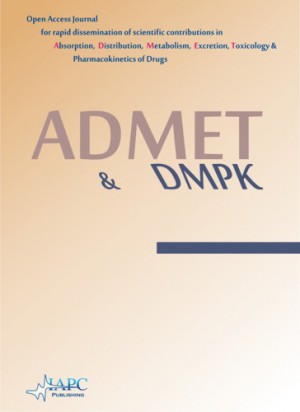
ADMET & DMPK
Yazarlar: Dindial Ramotar
Konular:-
DOI:10.5599/admet.5.3.394
Anahtar Kelimeler:Drug uptake and resistance,C. elegans organic cation transporters,Germ cells apoptosis,DNA damage and repair pathways
Özet: Solute carrier transporters, previously thought to perform roles in the transport of ions and various nutrients are now assigned broader functions. These transporters have recently been shown to permit entry of therapeutic drugs into cells. There is growing interest to understand the broad spectrum of drugs and chemical compounds that are recognized by these transporters such that specific ligands can be used as therapeutics to target definite physiological pathways. To facilitate this investigation, simpler and cost effective model systems are needed, one of such is the live whole model animal Caenorhabditis elegans (C. elegans) that offers a multitude of advantages. In general, studies with C. elegans are feasible due to the simplicity of the readouts that include lifespan, brood size, germ cell death, and visualization by epifluorescent microscopy, which can be set up in any laboratory. In C. elegans, two solute carrier transporters, the organic cation transporters OCT-1 and its paralogue OCT-2 have been partially characterized. OCT-1 mutants display a significantly reduced lifespan and brood size, as well as exhibiting an increased susceptibility towards oxidative stress and a subset of DNA damaging agents. These multiple phenotypes are directly linked to OCT-1 depletion causing upregulation of OCT-2, as RNAi-mediated downregulation of OCT-2 rescues the oct-1 mutant phenotypes. Thus, in C. elegans OCT-1 exerts control onto OCT-2, and this latter transporter plays a predominant role in the uptake of various ligands. We first showed that OCT-2 can efficiently mediate uptake of the widely used anticancer drug doxorubicin into the animals, but prevented uptake upon its downregulation. Additional ligands of OCT-2 including cisplatin and camptothecin were revealed by ligand-docking prediction studies. These analyses generated docking scores indicating that OCT-2 can make robust contact with a number of therapeutics and anticancer drugs, as well as chemical compounds that possess the ability to target specific physiological pathways. Several of the compounds displaying high docking scores with OCT-2 were validated and indeed found to be substrates that OCT-2 transported into the animals. This review provides an insight how the transporters OCT-1 and OCT-2 of a simple model organism C. elegans can be exploited to report on the cytotoxicities and genotoxicities of therapeutic agents, as well as trace amounts of undocumented toxic compounds with neoplastic potentials that are present in the environment.